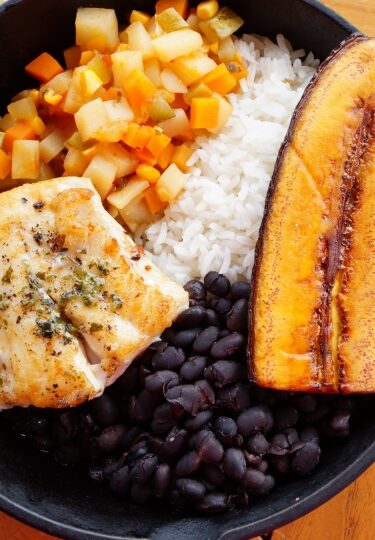Anything can grow in Costa Rica, a country of lush, tropical coastlines, cool, often mist-shrouded uplands, and fertile volcanic soil. As such, Costa Rican food is rich in fresh vegetables, delicious tropical fruit, and abundant seafood.
Cattle ranches in the highlands produce beef, while the coffee from hill farms is regarded as some of the finest in the world.
Many forces have shaped Costa Rica’s cuisine, from Spanish colonizers to freed African slaves and other Caribbean nations, the Maya, and the Chibchas.
Here are 27 dishes to try, representing the very best of Costa Rican food.
Gallo Pinto
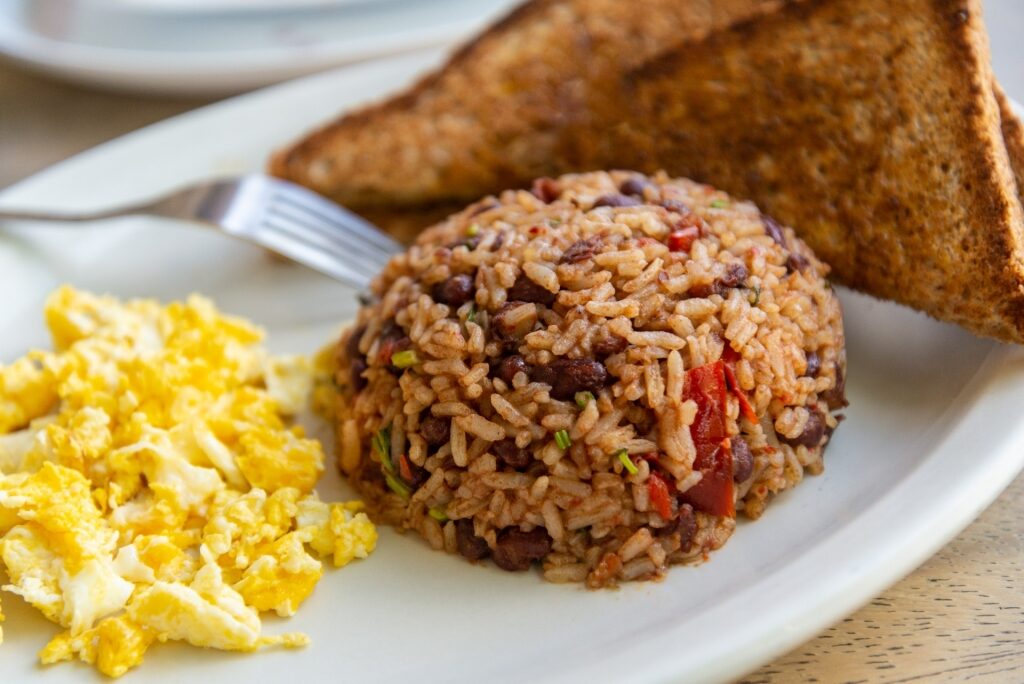
Gallo pinto
This classic combination of rice and beans is Costa Rica’s most famous dish. Gallo pinto actually means “spotted rooster”, which perhaps stems from the color combination of black or red beans and white rice.
When this hearty dish is served at breakfast, it’s prepared with onions, red bell peppers and cilantro, and usually comes with scrambled egg on top, bread or tortillas on the side, and sometimes even meat.
If gallo pinto is served in the traditional Caribbean style, you’ll find the rice has been cooked in coconut milk and the whole dish spiced up with chilies.
Casado
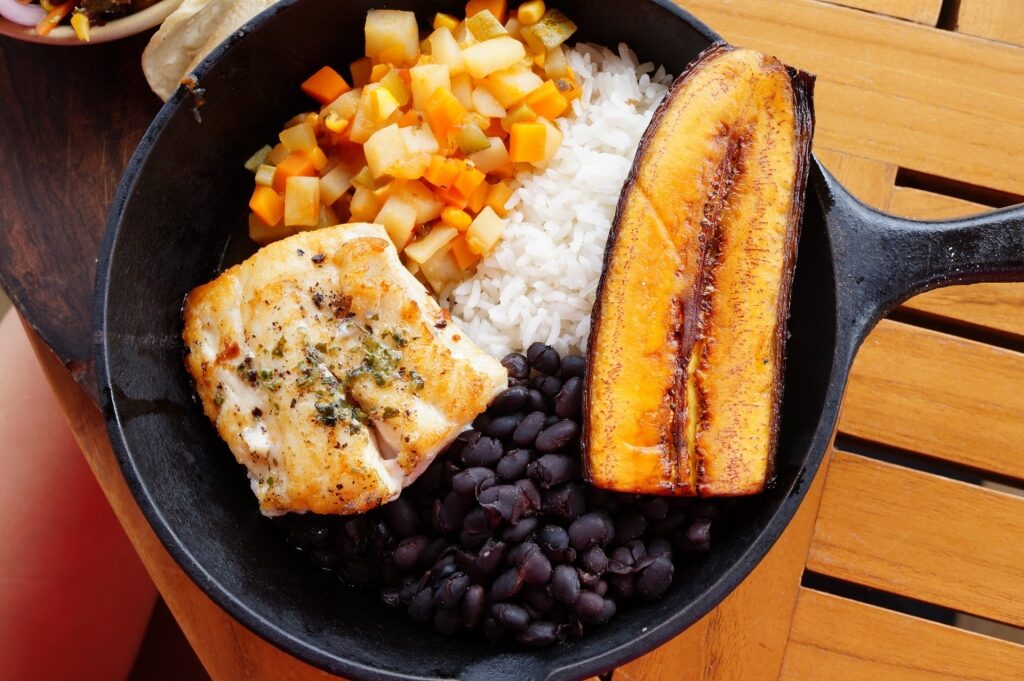
Casado
Casado—which means “married man”—is a hearty plate of protein and carbohydrates with many possible combinations. This is arguably one of the most famous Costa Rican foods. Fish, pork, chicken or beef is accompanied by rice and beans, often with extras on the side including salad, corn tortillas, slices of cheese, fries, and vegetables.
You’ll see casado on the menu in a soda, or typical Costa Rican café, as comida tipica (traditional food). It’s served for lunch or dinner. Why casado? Because in Costa Rica, rice and beans are considered “married”, or inseparable.
Ensalada Rusa
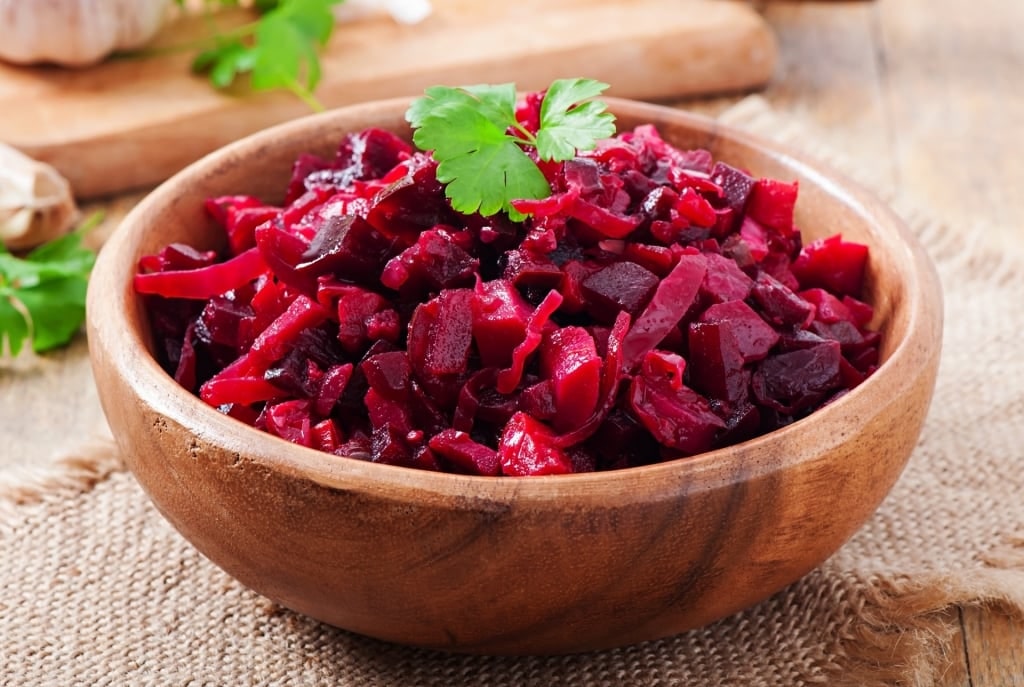
Ensalada rusa
Costa Rica has its own version of Russian salad, often served as a side. Diced, cooked potatoes are combined with beets, chopped carrots, onion, celery, bell pepper, and chopped boiled eggs, all tossed together in mayonnaise—practically a meal in itself.
Arroz con Pollo
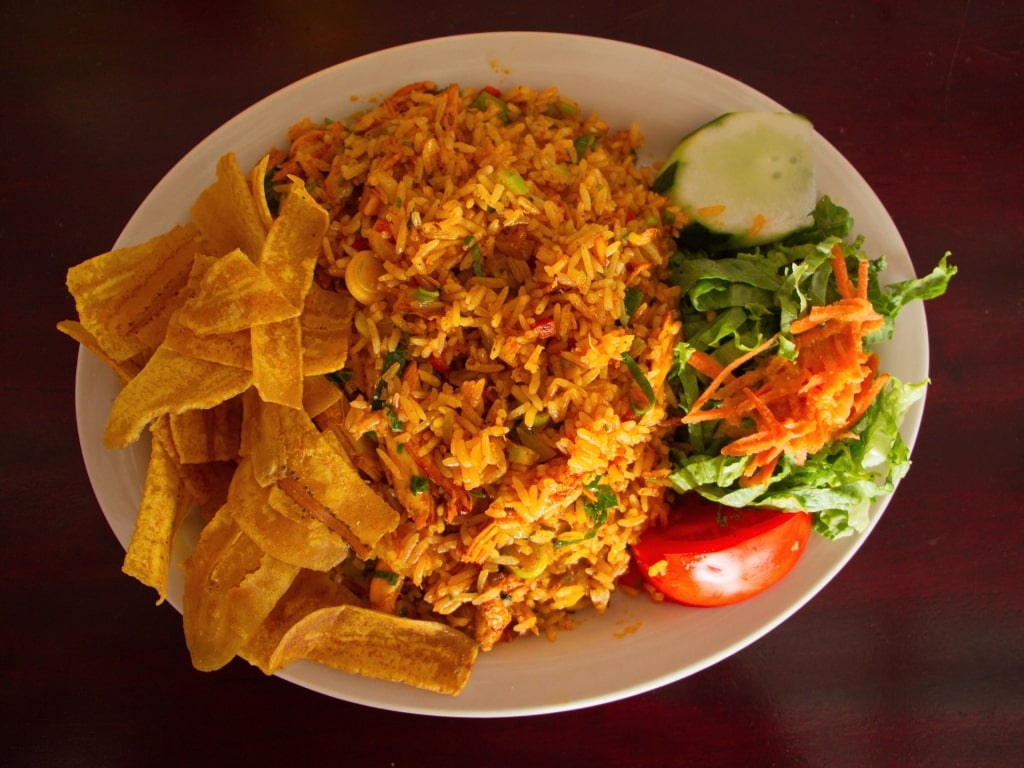
Arroz con pollo
Arroz—rice—is served with pretty much everything, but this Costa Rican classic, arroz con pollo, features chicken as the star.
The meat is shredded and the whole dish is flavored with onion and garlic, celery, and vegetables including red peppers, peas, and carrots. The spice annatto, a little like saffron, is mixed with the rice to make it yellow in color.
This being Costa Rica, a host of side dishes accompanies arroz con pollo, from a plain green salad to fries, mashed beans, or ensalada Rusa.
You’ll also see arroz con camerones (shrimps), vegatales (vegetables), or mariscos (mixed seafood) on menus.
Chicharrones
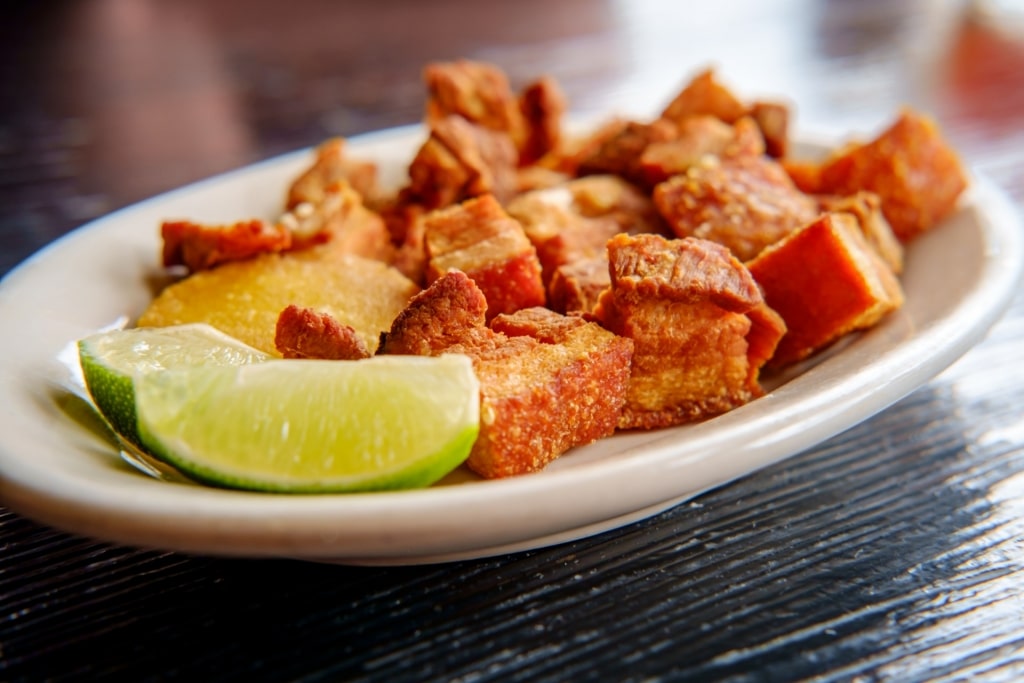
Chicharrones
Popular bar snacks and cholesterol-rich fiesta food, chicharrones are what’s known in other parts of the world as pork scratchings, or pork cracklings. Essentially, these are fried pork rinds—hard, crispy, salty, and fatty—and much loved.
Chifrijo
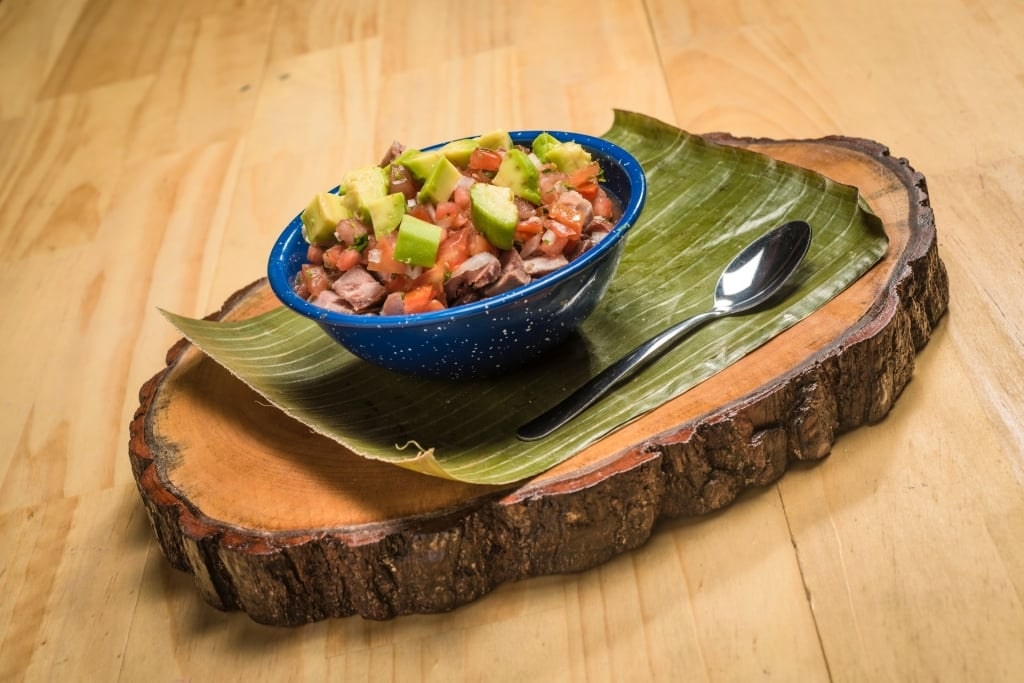
Chifrijo
Yet another popular rice-based dish is chifrijo. Rice and beans are served in a bowl and flavored with pico de gallo (a spicy tomato salsa), chimichurri, and topped with avocado or tomatoes.
Fried pork and chicharrones provide both protein and crunch. Some sodas serve tortilla chips or plantain chips on the side, or chilera, a portion of spicy pickled vegetables.
Patacones
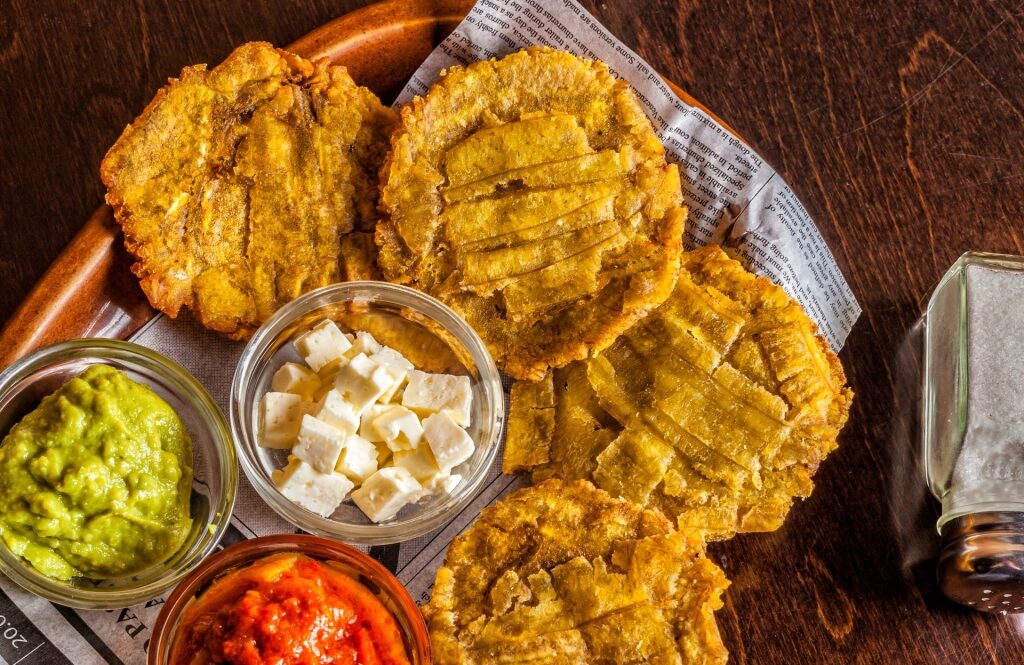
Patacones
Although they look a little like bananas, green plantains can’t be eaten raw. They are, however, delicious when cooked. Patacones are made by slicing green plantain, briefly boiling it, and then flattening the slices and crisping them up in a pan.
Typically, patacones are served with lime and salt, but they might be topped with guacamole, mashed beans, shredded chicken, pork or beef, and chimichurri. Or they could be served as a side with avocado or pico de gallo.
Olla de Carne
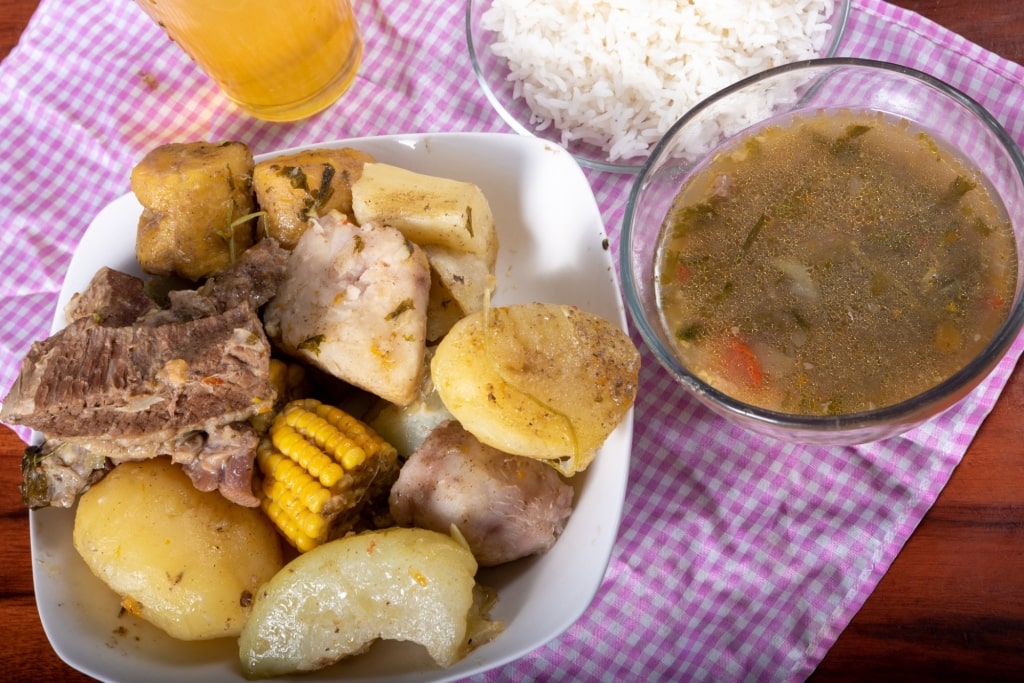
Olla de carne
Olla de carne originates from the cuisine of Spanish settlers who cleared parts of Costa Rica’s rainforest to raise beef cattle. Today, it’s a typical Costa Rican dish for the weekend, as it takes four to eight hours to simmer.
You can put whatever you want into this slow-cooked pot roast; every family has its own recipe. The basics are chunks of beef accompanied by plenty of starch in the form of sweet potatoes, carrots, corn, sweet plantains, chayote (similar to squash), yam, and yuca. The meat is cooked slowly on the bone, so it’s melt-in-the-mouth tender.
While olla de carne isn’t necessarily something you’d eat on the beach, it’s deliciously comforting on cooler days in the mountains.
Read: Experience Costa Rica’s Nature
Sopa Negra
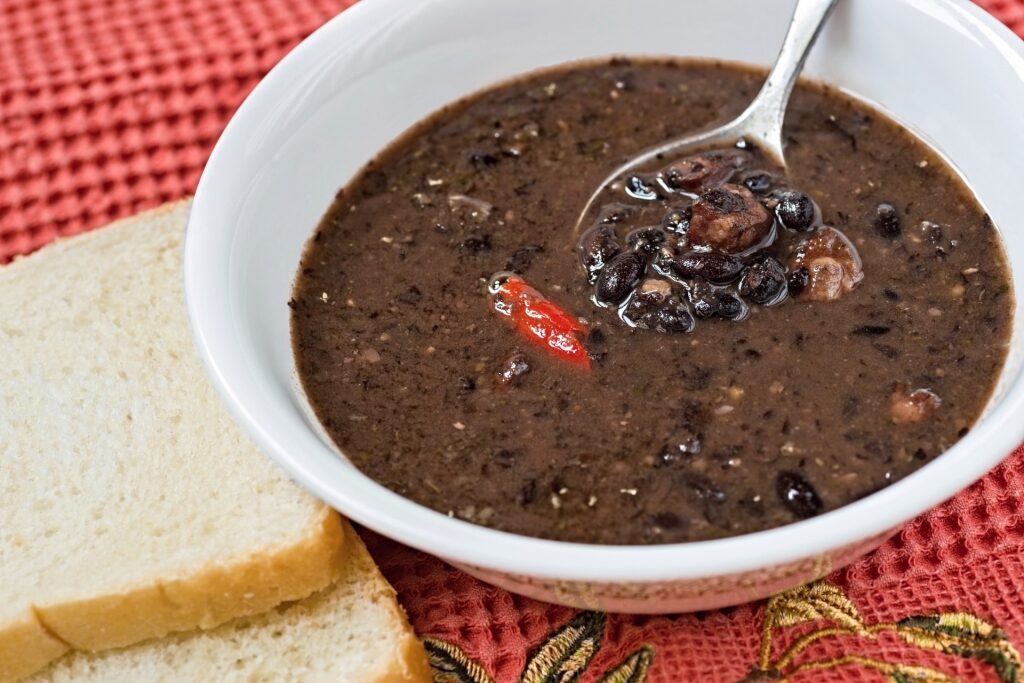
Sopa negra
A salty black bean soup, sopa negra is comfort food for Ticos. Usually, it comes with hard-boiled eggs, rice, and corn tortillas, with flavor from bell peppers, oregano, cilantro, celery, garlic, and onion.
Some of the beans are scooped out during the cooking process and mashed before being added back in, giving the soup a deliciously thick consistency.
Sopa negra is a healthy dish; in Costa Rica, it’s what your mom makes for you when you’re sick.
Sopa Mariscos
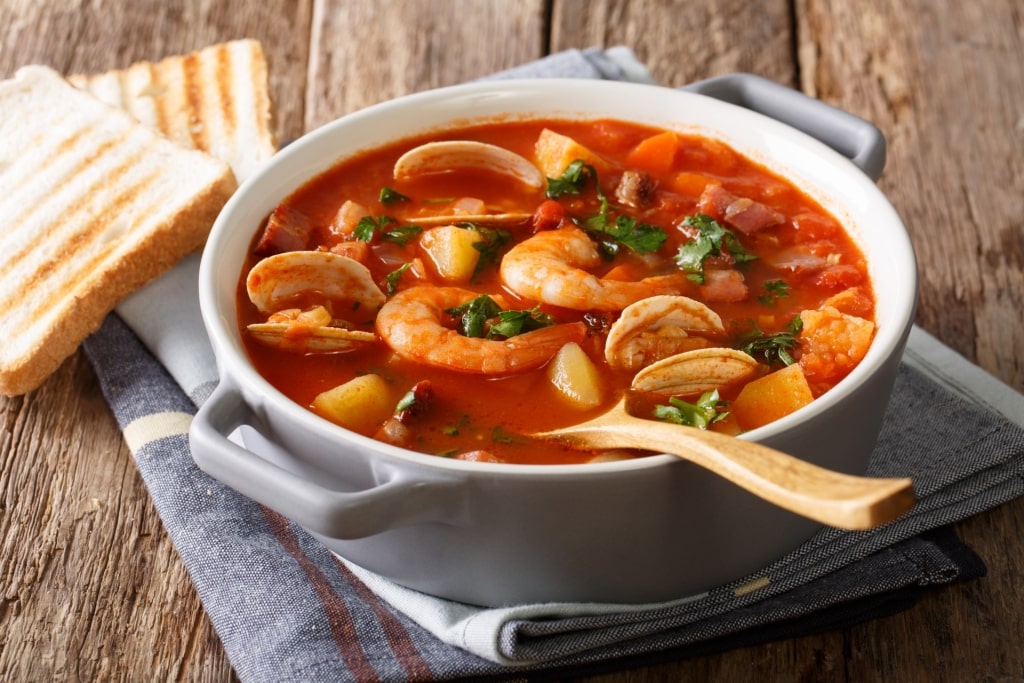
Sopa mariscos
Unsurprisingly, seafood is the star of coastal cuisine on both the Pacific and Caribbean coasts of Costa Rica.
Try sopa mariscos, a delicately spiced soup dense with squid, clams, mussels, shrimp, and white fish. The base is made from tomatoes, making this a very healthy dish.
Look out for sopa mariscos in a marisquería—an establishment similar to an informal soda, but specializing in seafood.
Pipa Fria
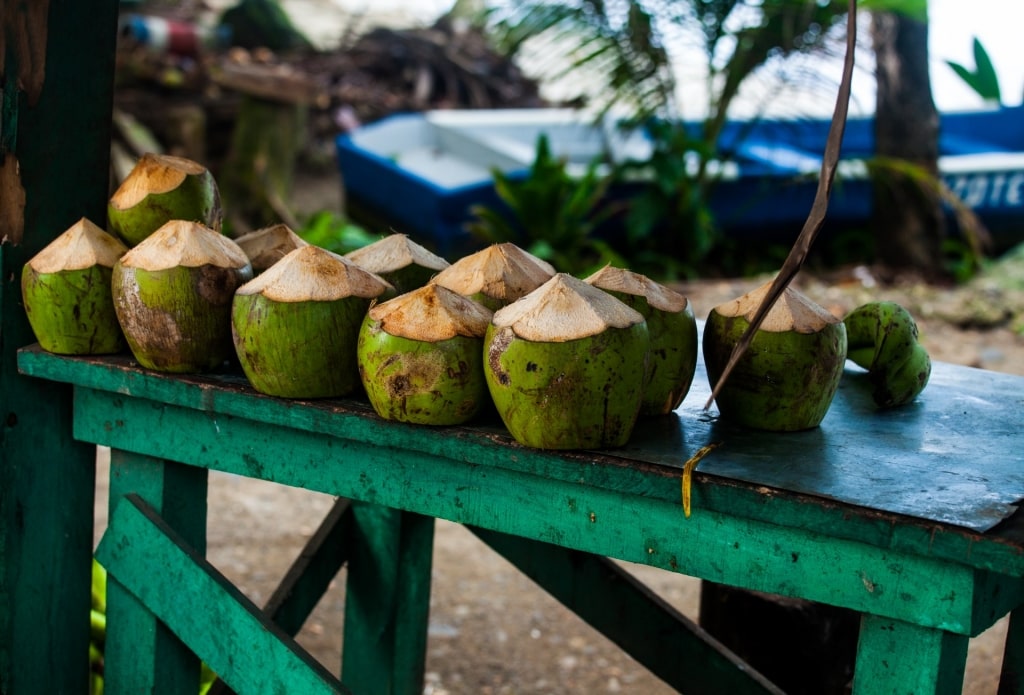
Pipa fria
Along the rainforest-lined roads in the countryside and often on the beaches, you’ll see stalls selling pipa fria, which is essentially a chilled green coconut.
The vendor will open the coconut for you and provide you with a straw to drink the delicately flavored water, which is both a delicious thirst quencher and a useful source of electrolytes on a hot day.
Tamal de Maicena
Ticos love their desserts, and you’ll see variations everywhere on sweet, set custard dishes. This version, tamal de maicena, includes milk, sugar, grated fresh coconut, and vanilla, set with corn starch. It’s baked in the oven and browned on top towards the end, and served chilled and cut into cubes.
Rondón

Rondón Photo by Aleat88 on Wikimedia Commons, licensed under CC BY-SA 4.0
Popular on Costa Rica’s Caribbean coast and originating in Jamaica, rondón is a coconut milk-based soup, spiced and filled with seafood.
Anything from clams to conch, mussels, sea snails or red snapper might be thrown in, as well as chilies, green plantains, and cassava. Rice and breadfruit often accompany the stew to soak up the delicious juices.
Tamal Asado
Another popular sweet dish in Costa Rica is the more complex tamal asado, a concoction of sour milk, grated queso cremoso (a light, creamy cheese), eggs, sour cream, butter, sugar, and cinnamon. A slice of tamal asado is the perfect accompaniment to a cup of Costa Rican coffee.
Picadillos
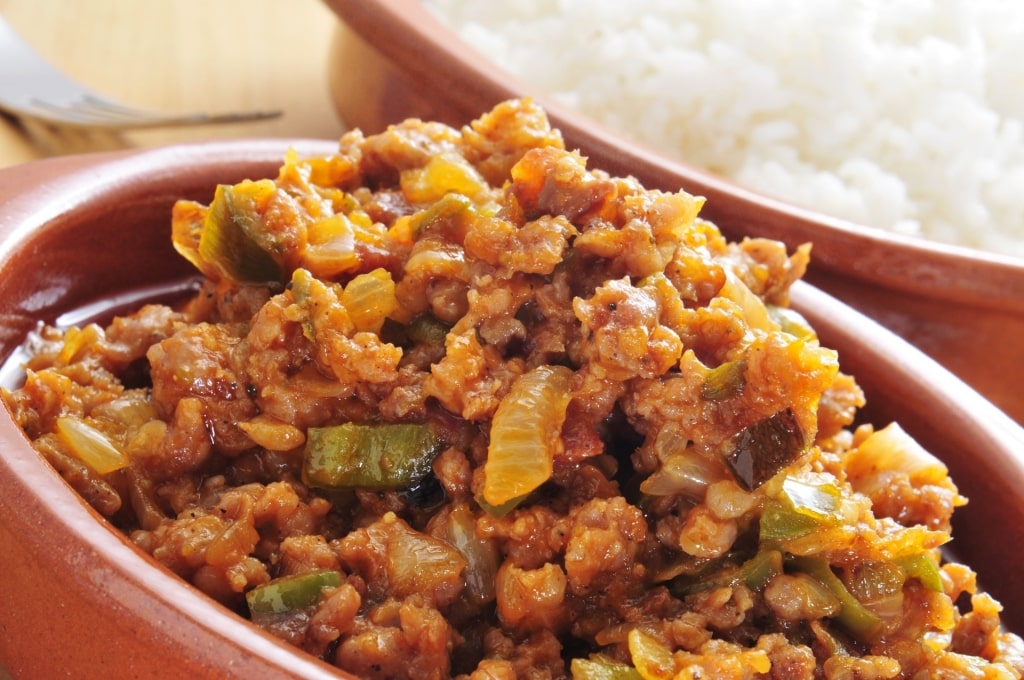
Picadillos
A nutritious vegetable hash is a great choice for vegetarians traveling in Costa Rica. A typical picadillo is a mish-mash of chopped vegetables cooked with onions, stock, and spices, featuring one item as its central flavor, whether it’s zapallo (squash), papa (potato) or vainitas (green beans).
Picadillo is sometimes accompanied by a protein, perhaps ground beef, or spicy chorizo, but vegetarians can leave that out. Eat your picadillo in a corn tortilla, similar to a taco but known as a gallo here.
Chorreadas
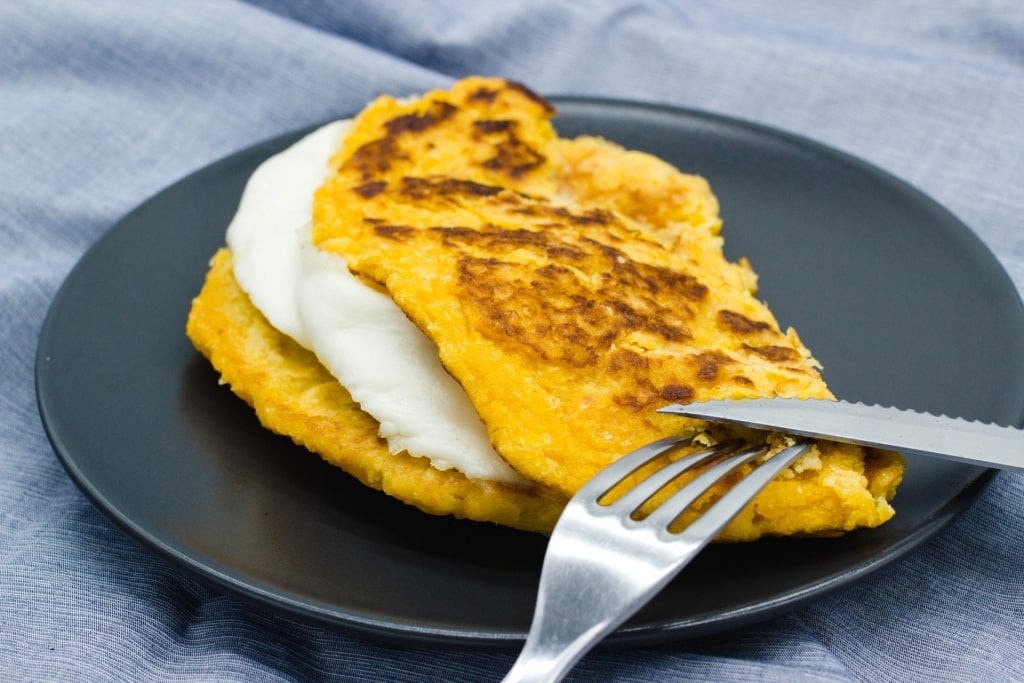
Chorreadas
Chorreadas is a broad term for corn pancakes, which may be made from ground white or yellow corn and served as a sweet or savory dish. They’re usually eaten for breakfast.
The corn is thickened with flour and beaten eggs, as well as butter, milk and vanilla, and served drizzled with honey. Savory versions leave out the sugar and vanilla and are dolloped with sour cream.
Vigorón

Vigorón
A favorite in Puntarenas province, vigorón is a street food served in plantain leaves. This tasty combination includes chicharrones (fried pork rind), grated cabbage, chimichurri, boiled cassava, and the ubiquitous green plantains.
Fresh fruits
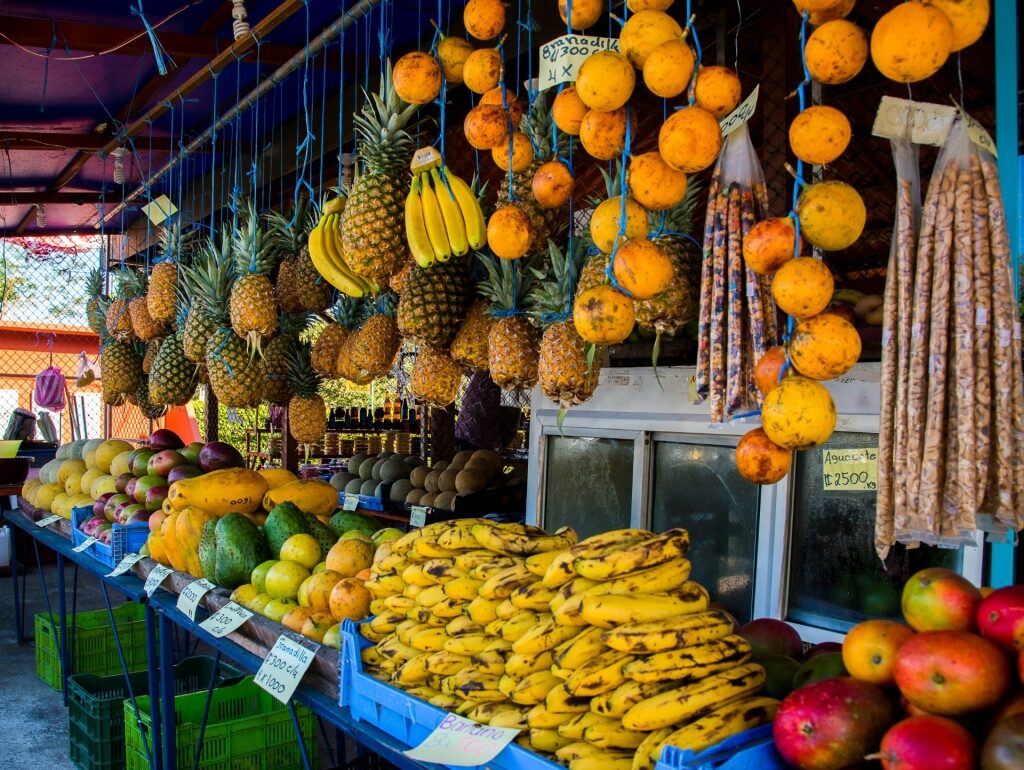
Fresh fruits
Fresh fruit in Costa Rica is a joy to eat, and you’ll see roadside stalls piled high with colorful and sometimes unfamiliar fruits.
There are mangos, papayas, pineapples and bananas galore, but other tropical fruits deserve to be tried. The sweet, fleshy guanabana, or soursop, makes an absolutely delicious, tangy juice for breakfast.
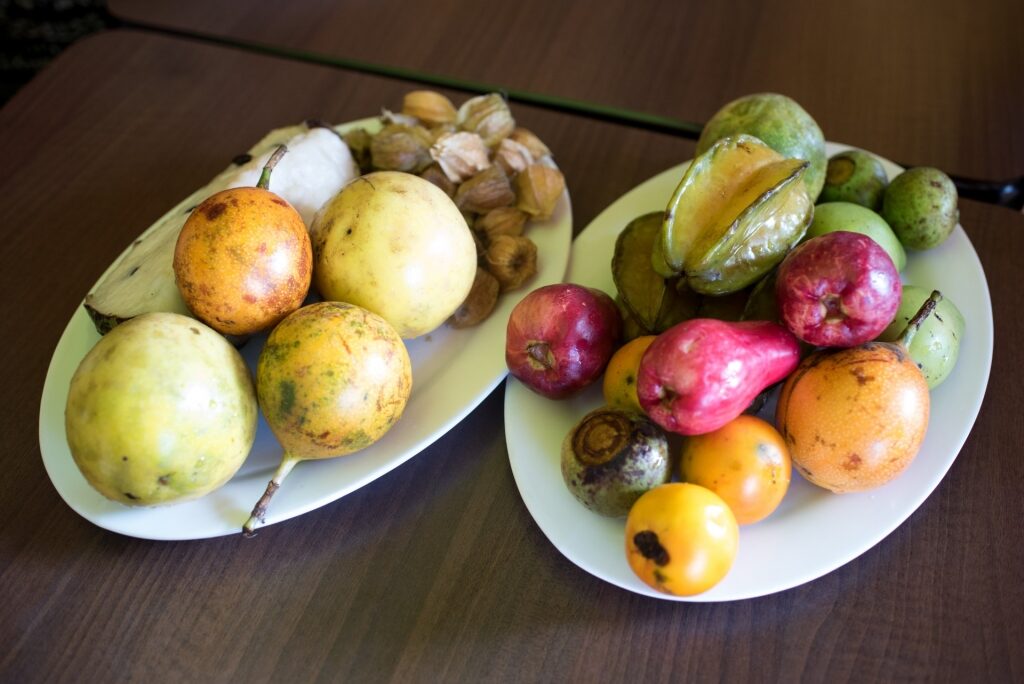
Exotic fruits in Costa Rica
You’ll also see manzana de agua, or water apples, and star fruit, called carambola here. Mamón chino are Costa Rica’s answer to rambutans, or lychees, while the zesty marañón is a cashew fruit.
Fruit is often served in a smoothie or milkshake, with guanabana, strawberry, or banana all popular flavors.
Ceviche
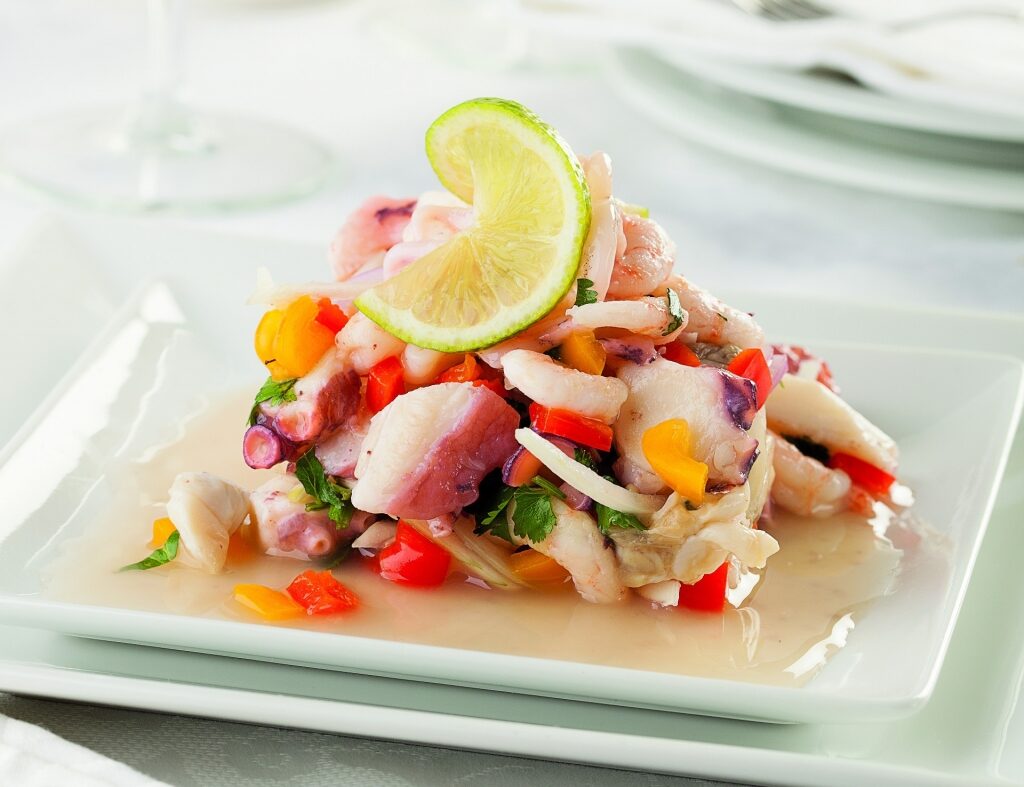
Ceviche
Ceviche may be the national dish of Peru,, but it’s popular in Costa Rica, too. While Peruvians only marinate the fish briefly, Ticos leave it in lime juice for at least an hour, so it feels a little less raw in texture.
Good candidates for ceviche include corvina, octopus, sea bass, and chuchecas, or blood clams. Minced onions, tomatoes, garlic, and cilantro may be served on the side.
Copo
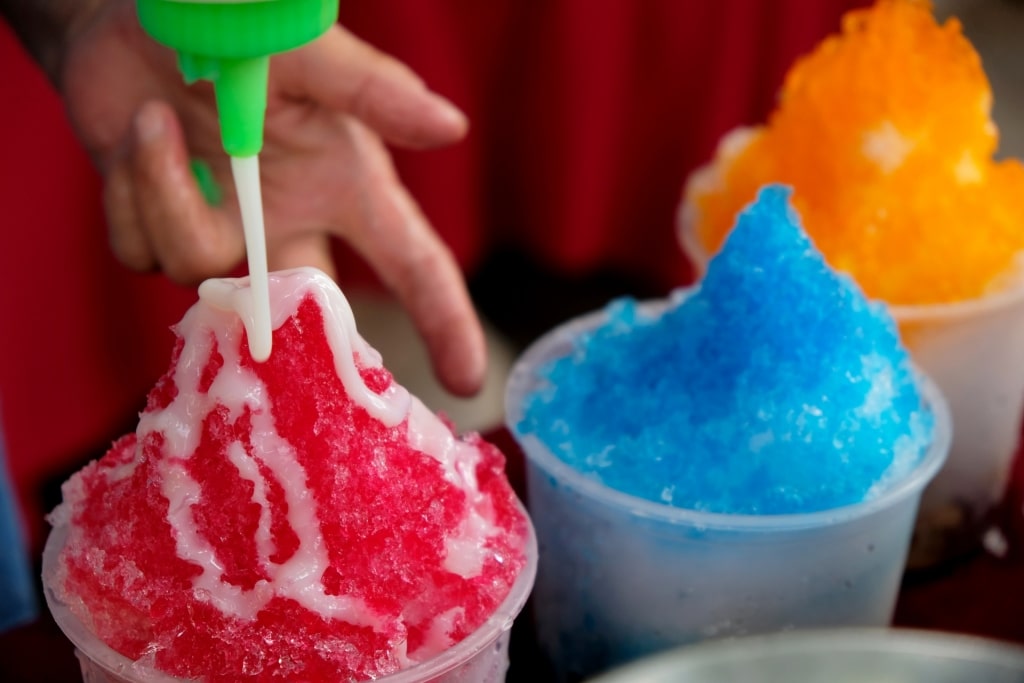
Copo
Copo is a simple idea and perfect for a hot day. Shaved ice in a cup or a cone is topped with fresh, chopped fruit, marshmallows, syrups, milk powder or condensed milk to make a kind of sweet sorbet. You’ll find copo vendors in towns and along the beach on hot days.
Read: Best Beaches in Central America
Tamales
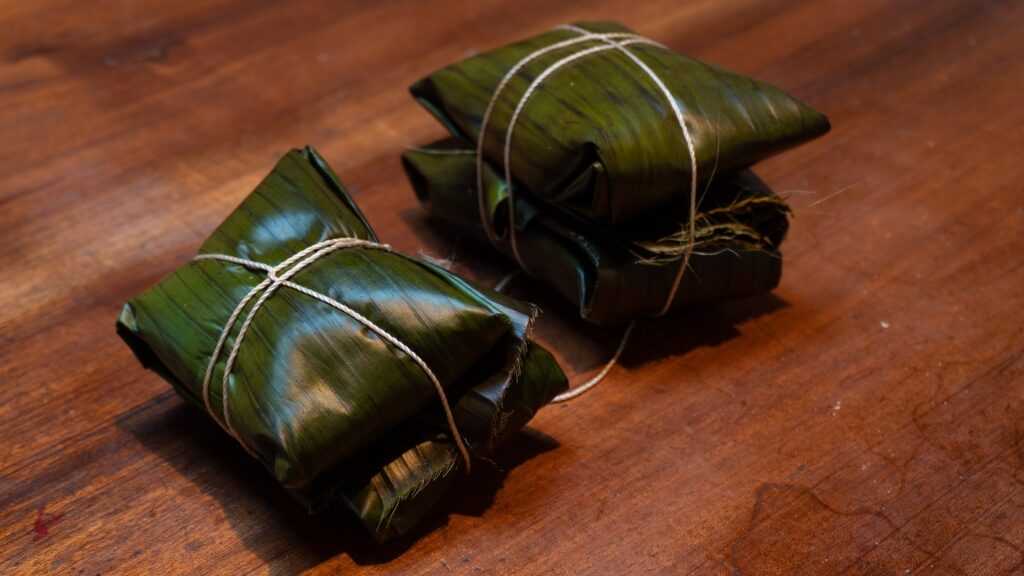
Tamales
Traditionally a Christmas dish in Costa Rica, tamales have Indigenous origins and have been adapted over the centuries to include non-native ingredients such as rice, beef, and carrots. Pork, though, is the most typical meat central to this dish.
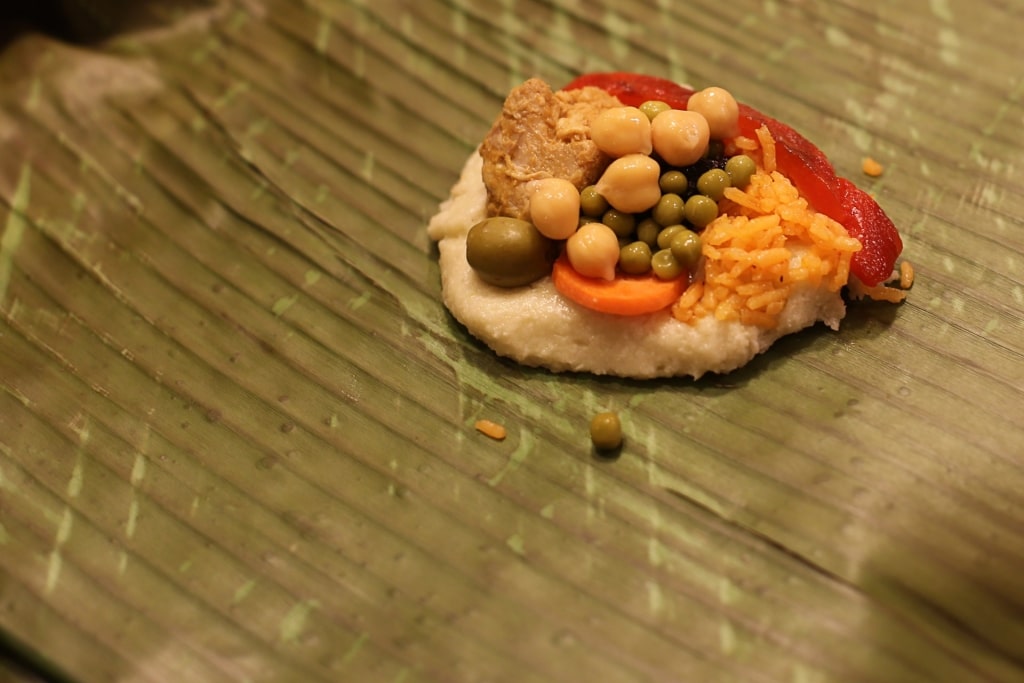
Tamales
The meat is seasoned and rolled in a banana or plantain leaf with sweet peas, chopped carrots, bell peppers, and cornmeal. Some people add their own variations, from eggs to garbanzo beans and even raisins. The whole package is tied with string and steamed.
Tártaras Cocadas
Another exceptionally sweet treat, these small tarts are baked on a base containing flour, sugar, nutmeg, and vanilla, with a coconut-flavored filling that’s sweetened with raw cane sugar and spiced up with cinnamon and nutmeg.
The tarts are baked so that the sugar caramelizes and the top turns a toasty dark brown.
Empanadas
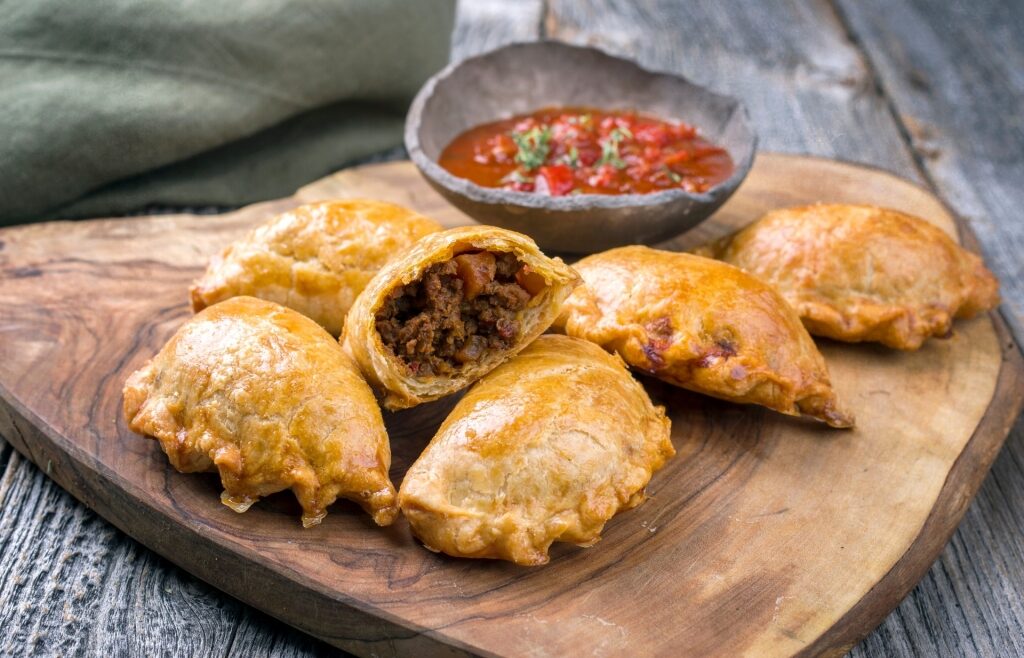
Empanadas
You’ll find empanadas all over South and Central America, and Costa Rica is no exception. These irresistible patties are the perfect food to enjoy on the hoof, or at a beach picnic.
Half-moons of corn pastry are stuffed with anything from meat to cabbage, beans, cheese, or picadillo. While meaty fillings are more common, veggie or cheese empanadas are a great choice for vegetarian travelers in Costa Rica.
Tres Leches
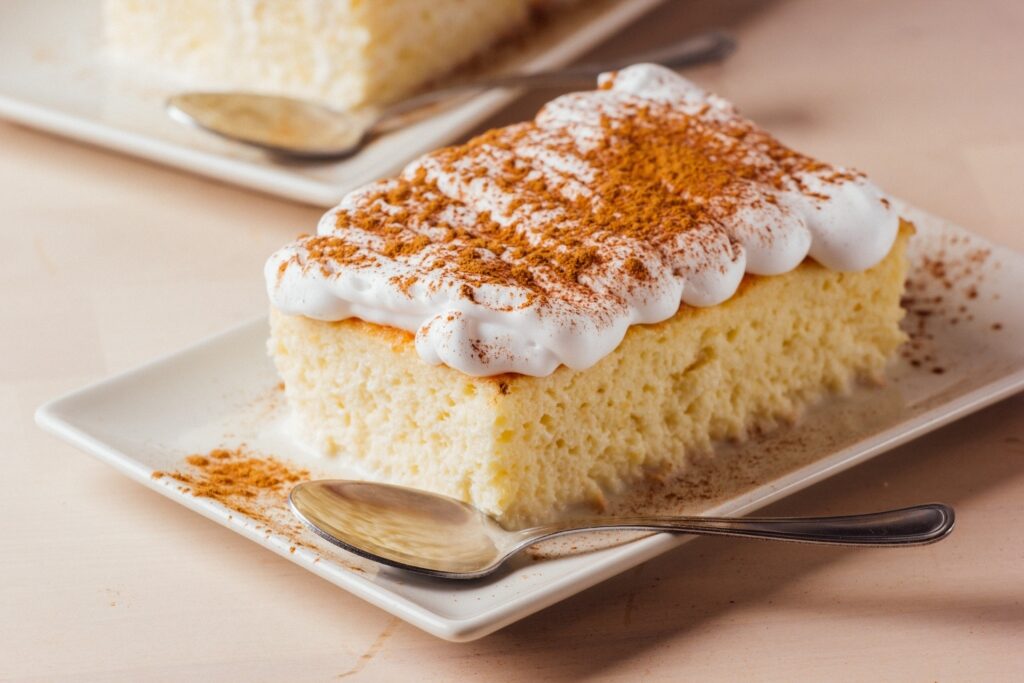
Tres leches
Some of the best desserts in the world are in Costa Rica. This decadent confection of “three milks” is exceptionally sweet. Tres leches is a calorific vanilla sponge cake that’s been soaked in a combination of evaporated milk, condensed milk, and whipped cream, refrigerated, and served cold.
Arroz con Leche
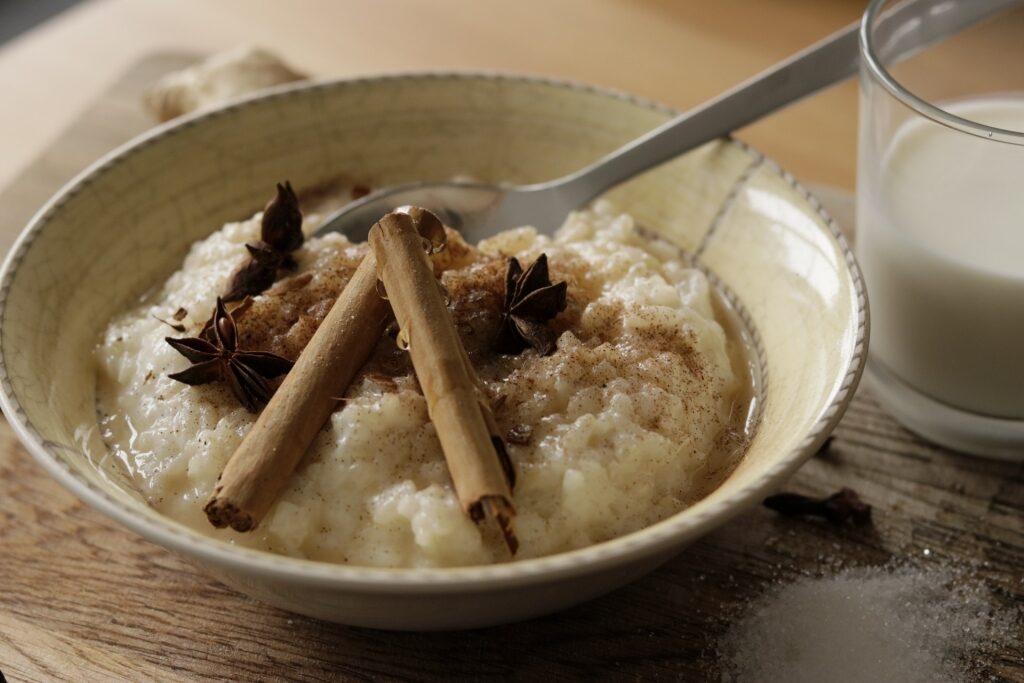
Arroz con leche
Otherwise known as rice pudding, this classic dessert that Costa Rica is known for includes white rice with condensed milk, vanilla, sugar, and most importantly, cinnamon. Some Ticos swear by adding raisins, too.
Pastel de Yuca
Pastel de yuca is Costa Rica’s answer to lasagne but uses a mix of manioc or cassava (yuca) mashed with cream cheese in place of pasta. The mash is layered with ground meat, typically beef, pork, or chicken, a rich tomato sauce, and more cheese, and is baked in the oven.
Coffee

Costa Rican coffee
Costa Rica grows and exports coffee, and sadly much of the best produce goes overseas. You will, however, find roasteries where the owners take great pride in the process and source their beans from smaller growers.
Coffee is usually served at breakfast and also following a meal, with hot milk on the side—and is the perfect excuse at any other time of day to indulge in a slice of tamal asado.
Read: Best Places to Visit in Central America

Puntarenas
Ready to try Costa Rica’s robust, creative cuisine? Browse our cruises to Costa Rica and book your next Central American adventure.
